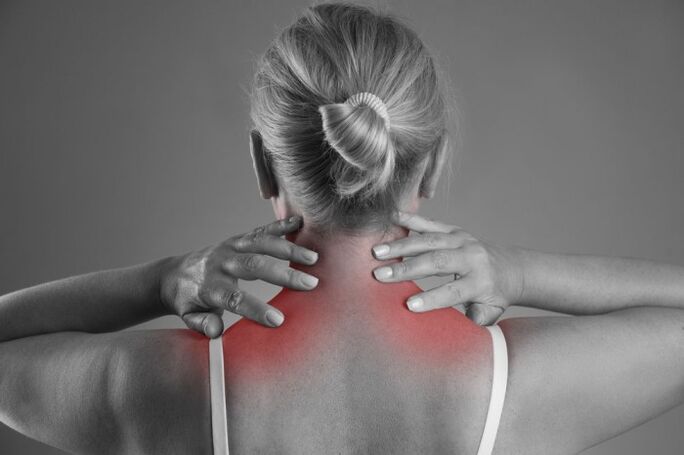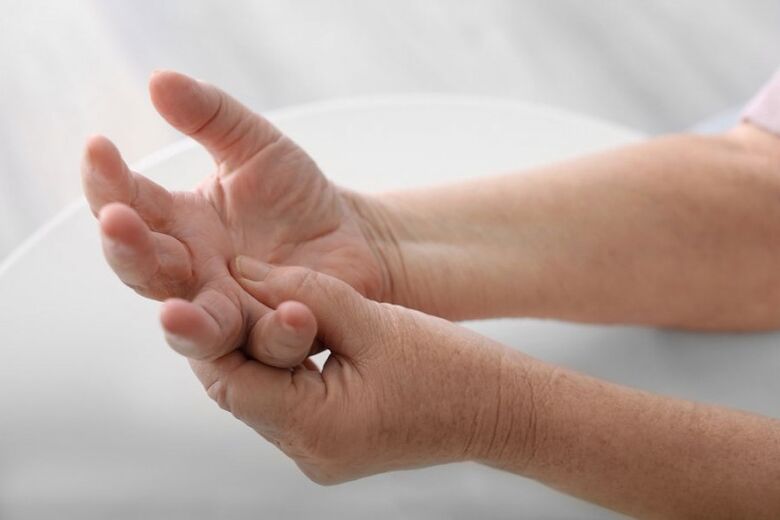
Modern human life is associated with a constant overload to which the spine is exposed. And if in the past these diseases of these important organs were mainly found in the elderly and frail, today, according to medical statistics, representatives of the younger generation are increasingly facing problems such as: so. The leader in this group of diseases iscervical bone necrosis(SHOOH). This disease brings a lot of inconvenience to the patient.
Therefore, it is worth learning about the reasons for its occurrence and the methods of treatment.
What is cervical osteonecrosis?
For a long time, most people try not to notice the uncomfortable discomfort in the neck area, which indicates overwork and fatigue. But over time, painful sensations plus discomfort when moving the head, and other unpleasant symptoms appear. And only when the situation becomes critical does a person seek medical help and learn that he has cervical osteonecrosis.
This disease usually affects both sexes equally. As noted, today it is often found in very young people under the age of 30. This phenomenon is largely due to the introduction of computer technologies into all areas of life. People just stop moving and spend most of their time chained to the screen. As a result, pathological changes begin to occur in the cervical spine: the vertebrae are displaced, and the cartilage tissue between them, representing a type of layer, becomes thinner. In other words, connective tissue overgrowth occurs when growth-like formations appear on the vertebral body.
As a result of these pathological changes, there is a decrease in shock absorption effect between the vertebrae, the bone surfaces in contact with each other, causing friction and compression of nearby nerves and blood vessels. All these pathological changes lead to a decrease in blood supply to the posterior parts of the brain, causing general deterioration of health and pain. If not treated in time, the disease will progress seriously, even leading to disability.
Causes of cervical osteonecrosis
Not long ago, the main cause of SHOC was always related to age-related changes in the body. But in the reality of modern life, there have appeared factors that increase the risk of diseases at a younger age.
Some of these reasons include:
- sedentary lifestyle;
- forced to stay in a position (usually sitting);
- overweight;
- autoimmune diseases;
- draft;
- stressful situations;
- trauma to the cervix or occipital region;
- congenital malformations of the spine;
- violation of metabolic processes.
In some cases, the disease develops due to hormonal disorders or unfavorable genetics.
Symptoms of cervical osteonecrosis
In contrast to pathological processes in other parts of the spine, SHOX expression is more evident. This feature is explained by the fact that in the cervical spine the vertebrae are located very close to each other, so the height of the discs is small. This anatomical feature contributes to a greater extent than other parts of the spine, compressing nerve tissue and blood vessels. Therefore, the main symptoms of the disease are localized in the upper back, in the cervical region and in the head.
In this case, the patient had the following complaints:
- limit neck movement, especially if you want to turn your head;
- severe pain, which often does not allow a person to perform a basic action (bow, turn the head);
- characteristic crunching sound when moving;
- reduced sensitivity in the hand;
- impaired coordination of movements;
- dizzy;
- general weakness;
- reduced vision and hearing, tactile sensitivity or taste perception.
Because the cervical spine consists of eight vertebrae, depending on the location of the injury, the disease has its own characteristic signs. Usually in these departments, there is a phenomenon of sensitivity disorders or limited mobility due to compression of the spinal roots. Therefore, cervical spondylosis is distinguished by lens symptoms, that is, it is taken into account which vertebrae are involved in the pathological process.

Symptoms of cervical osteonecrosis can be as follows:
- first vertebra - decreased sensitivity and numbness of the occipital and neck region is noted;
- second - soreness in the back of the head and top region;
- third - pain in the part of the neck where the root of the tooth is clamped, speech perception and taste are also impaired;
- fourth - pain spreading to the shoulder, below the collarbone, breathing disturbances can be observed;
- fifth - pain in the neck, spreading to the shoulder;
- sixth - soreness in the neck extending to the forearm and thumb on the hand;
- seventh - pain spreading to the scapula, posterior shoulder, forearm and fingers;
- eighth - pain spreads from the neck down the shoulder and further down the arm to the little fingers.
It should be noted here that the diagnosis pays special attention to the extent of the lesion. Because this criterion determines the degree of cervical fibroids. There are only four of them and they determine the severity of the pathological process.
Diagnostic
It should be noted that an experienced physician can easily diagnose cervical spondylosis during the initial examination, focusing only on the characteristic clinical symptoms. But to determine the extent of the lesion and the prevalence of the pathology, the patient is recommended to undergo several examinations.Basically, these are all hardware research methods. Diagnosis of cervical osteonecrosis includes:
- X-ray of the cervical spine. During the diagnosis, the extent of the lesion, localization, salt deposition, and features of the vertebral location are established.
- Computed tomography - allows you to detect possible ruptures, to establish the true height of the intervertebral discs, the location of compression of the nerve tissues and the spinal cord, if any.
- MRI (magnetic resonance imaging) - accurately shows pathological changes. Thanks to this type of examination, it is possible to accurately determine the state of the nerve fibers, as well as the intensity of the blood flow.
Usually, when making a diagnosis, one of the types of tests listed is sufficient. In most cases, doctors use a technique that has been proven for decades: X-rays.
Why is cervical osteonecrosis dangerous?
Any pathology of the spine is fraught with serious problems. After all, the spine is a kind of foundation on which the entire structure of the human body is based. Vital blood vessels pass through the cervical region, delivering oxygen and nutrients to the brain. There are many nerve endings here. Therefore, a violation of the internal organs or the blood supply to the vital organs will lead to serious consequences. And this is not an exaggeration of the danger, since the degenerative process of the cervical spine has serious consequences.

In addition to sensory discomfort, the resulting vertebrae deviation leads to hearing loss, impaired vision. The brain with SCH is deprived of oxygen. Therefore, cervical osteosarcoma is considered the most dangerous form of this disease.
To be convinced of this, it is enough to just list the most common complications of SHOX:
- persistent hypertension;
- chronic migraine;
- vegetative vascular dystonia (VVD);
- breathing problems;
- various perceptual disturbances (taste, touch), which eventually take place in an irreversible form;
- cardiovascular diseases, in which stroke is the most dangerous.
In advanced cases, the patient develops vertebral artery syndrome, and prolonged compression of the nerve roots leads to radiculopathy. Changes in the structure of the vertebrae can then lead to a complete loss of mobility in the neck. But the most serious complication of cervical osteonecrosis is death, resulting in spinal cord compression.
Given the severity of the situation and the high likelihood of complications, if alarming symptoms appear, you should immediately contact the hospital. Among such unpleasant signs may be: systemic headache, dizziness, discomfort in the neck or back of the head. After the diagnostic measures, the doctor will choose an appropriate therapy.
Treatment of patients with SHS is often complex. Therapy necessarily includes massage, gymnastics, physiotherapy. Of course, without the use of drugs, it is not possible to improve the patient's condition.Therefore, the complex of drug therapy for osteonecrosis includes:
- analgesic;
- non-steroidal anti-inflammatory drugs;
- chondroprotectors;
- muscle relaxants are means of relieving muscle tension;
- a vitamin complex is necessarily prescribed.
All therapies are selected by a specialist, taking into account the individual characteristics of the patient. Any self-treatment of cervical necrosis is unacceptable. All of these drugs are aimed at localizing symptoms during the acute phase of the disease. During periods of remission, other techniques are involved. Usually, treatment is done at home, that is, on an outpatient basis. But in particularly severe cases, the patient must be hospitalized.
Traditional methods of treatment
Doctors are always ready to supplement therapeutic drug complexes with natural preparations prepared on the basis of folk recipes. The decoction, infusion helps to reduce inflammation, relieve pain.

Here are some recipes for alternative treatment of osteonecrosis:
- Dill seeds (200 g) should be poured with vodka (250 ml) or alcohol half diluted with water. After two weeks of infusion, it is recommended to drink on an empty stomach three times a day, one tablespoon of the infusion.
- Means for external use are easy to prepare in the following order: fenugreek leaves (fresh) pounded into a fine mass, add 300 ml of radish decoction (black), and then add 200 g of crushed honey. It is necessary to emphasize the composition of the whole day in a dark place. It can then be used to rub the problem area. This product is recommended to be used after consulting a doctor. The preparation is contraindicated for people who are allergic to its components.
- From lilac flowers, you can prepare an infusion for internal use. To do this, take a spoonful (tbsp) of fragrant inflorescences, pour a glass of boiling water, strain for an hour and take 1 liter three times. Art.
Important! When taking all herbal preparations, the prescribed dosage should be strictly followed.
Exercise for treating cervical spondylosis at home
It is reasonable to talk about the complexity of corrective exercise with SHH only after cessation of the acute phase. With an exacerbation of the disease, such activities can only aggravate the situation.
All physical therapy exercises are aimed at maintaining normal mobility of the cervical spine. The class is held with a smooth rhythm, there should be no sudden movements. If there are signs of fatigue or painful sensations, classes stop immediately. The complex includes the following exercises that you can regularly do at home:
- When standing, you need to tilt your head and inhale so that your chin touches your chest. As you exhale, the head gently pulls back. The same exercise can be done freely while sitting in a chair.
- In any starting position, it can be convenient to make rotational movements of the head. It is better to periodically change the direction of movement so that your head does not rotate. The exercise should be performed at a slow pace.
- Regular practice of this exercise will perfectly strengthen the muscles of the cervical region: you need to put your hands in the "locks" and press your forehead to them as much as possible. For a lasting effect, repeat this exercise three times for 30 seconds. You can alternately press your palm to your forehead, then press your forehead to your palm.

There are many other effective methods, but any of them can only be used after consulting your doctor.
To prevent diagnostic history"cervical bone necrosis», You need to lead an active life, exercise regularly in the morning, pay attention to your neck and properly equip yourself at work.

















































